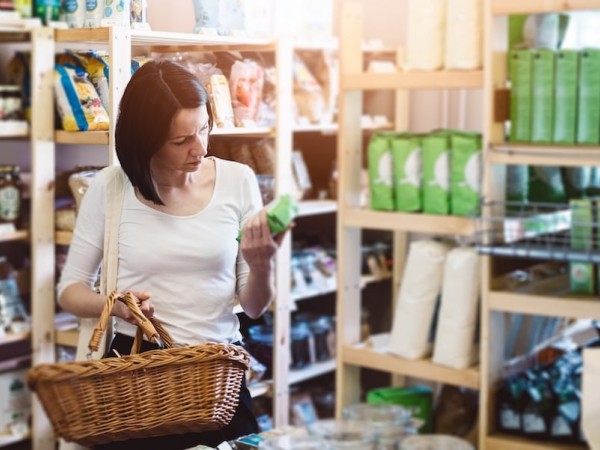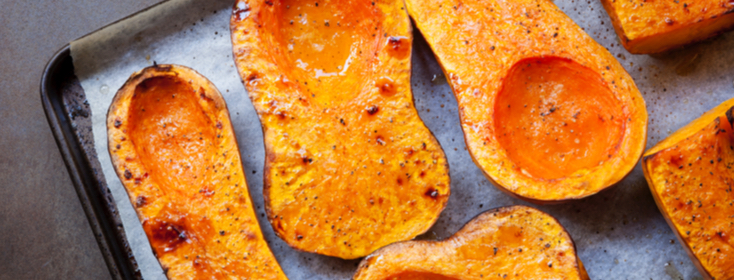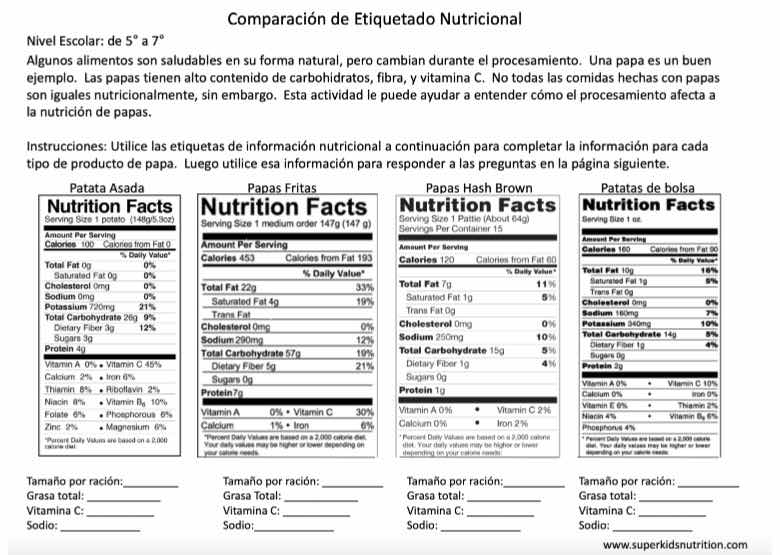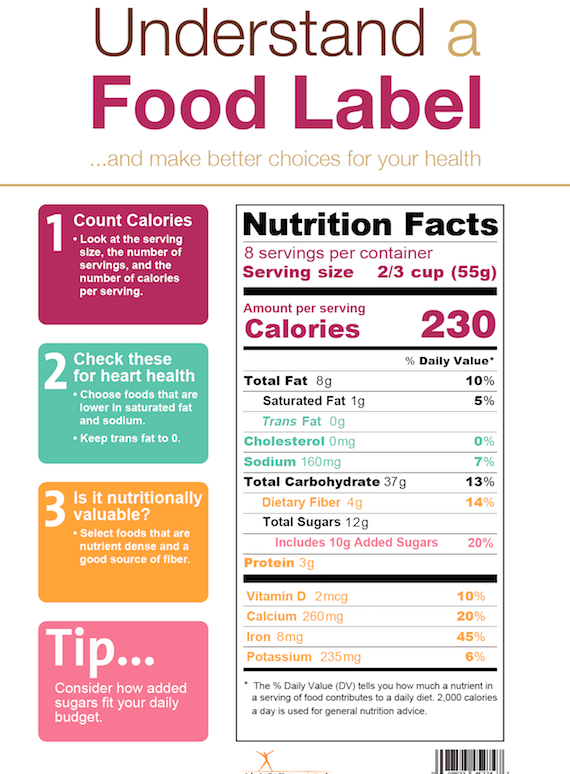44 reading food labels diabetes
Reading food labels: Tips if you have diabetes - Drugs.com Nutrients and Daily Value: The label must list the amounts of total fat, saturated fat, trans fat, cholesterol, sodium, total carbohydrate, dietary fiber, sugars, protein, vitamin D, calcium, iron and potassium that are in one serving. The Daily Value (DV) tells you how close you are to meeting your daily requirements for each nutrient. How to Read Food Labels When You Have Type 2 Diabetes Quick Tip: When you see sugar-free on a label it means less than 0.5 grams of sugar per serving. No sugar added doesn't mean low or no-carb. A lot of food labels say "no sugar added" but these foods might have tons of carbs. No sugar added simply means no sugar was added during processing or packaging. Sugar alcohols have hidden carbs.
PDF What Can I eat? - American Diabetes Association list of everything that is in the food. They are listed by the highest amount to the least. If the first word in the list is sugar, then there is more sugar in the food than anything else. Reading Food Labels Food labels can help you choose what foods to eat. Use the labels at right to find the best choice. 1-800-DIABETES (1-800-342-2383) www ...

Reading food labels diabetes
PDF Label Reading Basics for Diabetes - Veterans Affairs This food has 300 mg of sodium per ½ cup serving. It is suggested to limit salt intake to 1500 mg per day when you have diabetes. With pre-diabetes, your sodium intake should still be monitored. The goal is less than 2300 mg per day. A good first step is to not have a salt shaker at home. Total Fat The area on the label describing Learning To Read Labels :: Diabetes Education Online On a nutrition food label, subtract the fiber from the total carbohydrate amount. When you read food labels, the grams of sugar are already included in the total carbohydrate amount, so you do not need to count this sugar amount separately. The grams of sugar listed include both natural sugars, from fruit or milk, and added sugars. Reading Food Labels When You Have Diabetes | Kaiser Permanente Start with the "% Daily Value" column on the food label. A food is considered low in a specific nutrient (such as fat, saturated fat, carbohydrate, or sodium) if it has 5% or less of the daily value. A food is considered high in that nutrient if it has 20% or more of the daily value. Watch out for health claims on food labels.
Reading food labels diabetes. Food Labels | CDC If you eat the whole thing, you are eating 8 times the amount of calories, carbs, fat, etc., shown on the label. Total Carbohydrate shows you types of carbs in the food, including sugar and fiber. Choose foods with more fiber, vitamins, and minerals. Choose foods with lower calories, saturated fat, sodium, and added sugars. Avoid trans fat. Understanding Food Labels | The Nutrition Source | Harvard T ... Chile implemented the Law of Food Labeling and Advertising in 2016, comprised of mandatory front-of-package (FOP) warning labels, restrictions on child-directed marketing, and the banning of sales in schools of all foods and beverages containing added sugars, sodium, or saturated fats that exceeded set nutrient or calorie thresholds. [1] Making Sense of Food Labels | ADA - diabetes.org Reading labels can help you find these hidden sources and compare the sodium in different foods. Whether you have diabetes or not, 2300 milligrams (mg) or less per day is the general recommendation. If you have high blood pressure, talk with your health care team to find out the best goal for you. List of ingredients How to Read Food Labels When You Are Diabetic - Diabetics Weekly Study the Carbohydrate Content in Detail. This is the most important aspect of how to read food labels when you have diabetes. The total amount of carbohydrates breaks down into complex carbohydrates, sugar, and fiber. Don't hone in on zero-sugar foods, as foods like milk and fruit contain natural sugars. By the same token, make sure to watch ...
How to Read the New Food Label The percent daily value (%DV) can be used as a quick guide to the food label. Try the 5/20 rule when reading a label. Think about 5% or less as low for any nutrient and 20% or more is high for any nutrient. The %DV is a great way to compare food products if the serving size is the same. Fiber is the nutrient on the label that you want to aim ... Reading Food Labels When You Have Diabetes | CS Mott Children's ... Top of the page Reading Food Labels When You Have Diabetes IntroductionWhen a food comes in a package, take a look at the Nutrition Facts label and ingredient list on the package. Start with the "% Daily Value" column on the food label. A food is considered low in a specific nutrient (such as fat, saturated fat, carbohydrate, or sodium) if it has 5% or less of the daily Understanding food labels fact sheet - NDSS Food labels will typically include a nutrition information panel, list of ingredients, the 'use by' or 'best before' date and identify potential food allergens and additives. Food labels also tell you the amount of carbohydrates (carbs) you eat and drink. This can help you manage your blood glucose levels. PDF Label reading basics for diabetes - Veterans Affairs Label Reading Basics for Diabetes Nutrition and Food Services (05/2020) Serving Size • The serving size is the portion size used for all the values on the label. • Different foods have different serving sizes. • The serving size on this label is 2/3 cup. Servings per Container • Indicates the number of
Reading Food Labels When You Have Diabetes | Cigna Start with the "% Daily Value" column on the food label. A food is considered low in a specific nutrient (such as fat, saturated fat, carbohydrate, or sodium) if it has 5% or less of the daily value. A food is considered high in that nutrient if it has 20% or more of the daily value. Watch out for health claims on food labels. Understanding Ingredients on Food Labels | American Heart ... Mar 06, 2017 · Food labels are an important source of information about calories and the nutritional value of the foods you eat, a crucial tool in building a heart-healthy diet. The Nutrition Facts information is always displayed in the same orderly fashion and helps you understand how much of certain nutrients that you need to limit are contained in the ... A Guide to Reading Food Labels - University of Rochester Feb 27, 2013 · a single serving of this food come from fat. Due to its high fat content, this food is not a healthy choice. Limit These Nutrients . Americans typically eat too much saturated fat, trans fat, cholesterol, and sodium, which can increase the risk for heart disease, cancer or diabetes. Total fat is important to watch, but saturated fat and trans ... PDF TO CARE 4 YOURSELF READING A NUTRITION FACTS LABEL - novoMEDLINK Reading the label can help you compare the amount of sodium in different foods so that you can choose lower-sodium options. Talk with your diabetes care team about what to include in your meal plan. Reading a Nutrition Facts label Reference: 1. American Diabetes Association. Standards of medical care in diabetes—2019.
How to read food labels | healthdirect Energy: A kilojoule is a measure of energy. To lose weight, you need to eat and drink fewer kilojoules (kJ) than you use. You should limit your intake of discretionary or junk foods — i.e. those that have more than 600kJ per serve.
Reading food labels & nutrition panel - Diabetes Queensland Reading food labels When choosing packaged food, choose products with: lower energy (kilojoules) if you are trying to lose weight lower total and saturated fat lower sugar lower sodium higher fibre Every food label tells a story and the Nutrition Information Panel simply gives you the facts.
Reading a Nutrition Label When You Have Diabetes and Kidney Disease Potassium Potassium is found in many foods, including fruits, vegetables, bran, nuts, and seeds. If you have CKD, you'll likely have regular blood work done to check your potassium levels. When...
Food labels can also help to mitigate main public health issues like diabetes or obesity. People will be more aware of what they are eating and could reduce their calory intake. Even though many people might still ignore the information on food labels, a certain fraction of people might care.
Reading Food Labels | ADA Reading labels can help you find these hidden sources and compare the sodium in different foods. Whether you have diabetes or not, 2300 milligrams (mg) or less per day is the general recommendation. If you have high blood pressure, talk with your health care team to find out the best goal for you.
Reading food labels: Tips if you have diabetes - Mayo Clinic Food labels can be an essential tool for diabetes meal planning. Here's what to look for when comparing food labels. By Mayo Clinic Staff When you live with diabetes, your diet is a vital part of your treatment plan. Of course, you know what you're eating — a turkey sandwich, a glass of skim milk, a sugar-free fudge pop.
Reading food labels: Tips if you have diabetes - Augusta Health Reading food labels: Tips if you have diabetes. Content provided by Mayo Clinic. Date Updated: 06/25/2021. Start with the list of ingredients. Consider carbs in context. Put sugar-free products in their place. Beware of fat-free products. Know what counts as a free food. Do the math.
Reading Food Labels to manage Diabetes When reading the label of food packaging, it's helpful to also be mindful of the salt content and fatty acids. Eaten in large quantities, salt causes hypertension and kidney complications and fatty acids can lead to cardiovascular problems. It can also be helpful for people with type 2 diabetes to keep track of overall calorie intake because ...
Diabetes Food Label Reading: Quick Tips to Shop Smarter In fact, you comb the rows of canned, boxed, and packaged foods to find that almost every label claims that the food is "all natural," "low in sugar," "sugar free" or "fat free." But what does this actually mean? Let's debunk some of the most common health claims made on food packaging: "Sugar free"
Reading Food Labels, The Most Basic Tool in Diabetes Management Reading food labels for people with diabetes is an important tool in the management of the disease. Our skilled nurses help you to better understand the Nutrition Facts labels. (702) 871-9917
Reading Food Labels | ADA - American Diabetes Association The Nutrition Facts labels on foods are really the key to making the best choices. We'll cover the basics so that these labels make shopping easier for you. You've heard it all. From carb-free to low-carb, to whole and empty carbs, it's hard to know what it all means. Blood sugar highs and lows aren't always easy to understand.
Reading labels | Diabetes UK Key points Always look at the 'total carbohydrate' on the label when carb counting. This will make sure you are counting both the complex (starchy) and simple (sugary) carbs in your food. Both will raise your blood glucose (blood sugar) levels, and need to be matched with insulin.
Understanding food labels | Diabetes UK Check the ingredients list - if syrup, invert syrup, cane sugar, molasses or anything ending in 'ose' is within the first three ingredients, this suggests the food contains more added sugar. Choose an alternative if possible, or be mindful of the portion you eat. Check the fibre content on the back of pack label.
Reading Food Labels When You Have Diabetes - WebMD Reading Food Labels When You Have Diabetes Medically Reviewed by Michael Dansinger, MD on May 16, 2021 In this Article Serving Size Calories and Calories From Fat Nutrients Ingredients Label Claims...
Reading Food Labels When You Have Diabetes | Kaiser Permanente Start with the "% Daily Value" column on the food label. A food is considered low in a specific nutrient (such as fat, saturated fat, carbohydrate, or sodium) if it has 5% or less of the daily value. A food is considered high in that nutrient if it has 20% or more of the daily value. Watch out for health claims on food labels.









Post a Comment for "44 reading food labels diabetes"